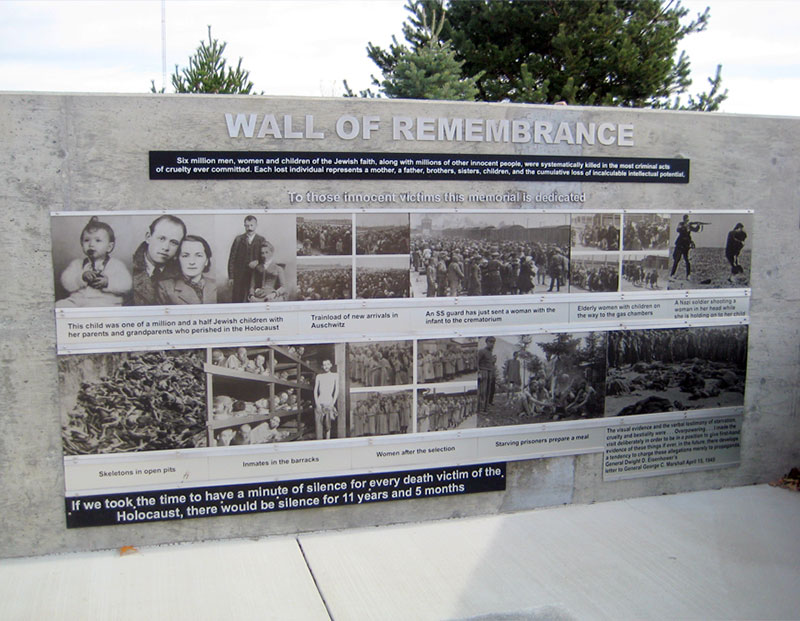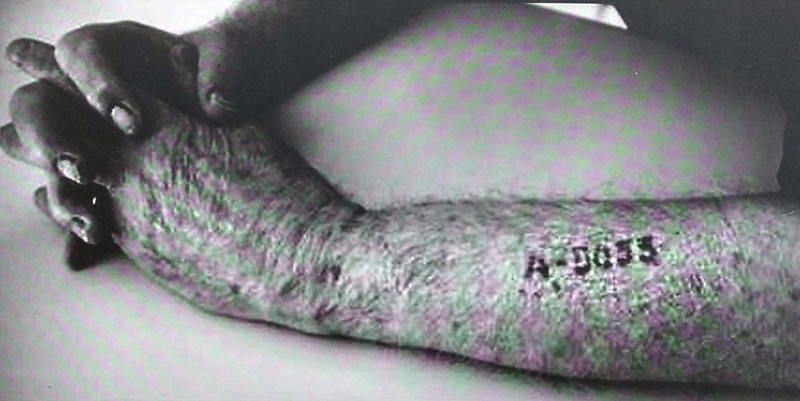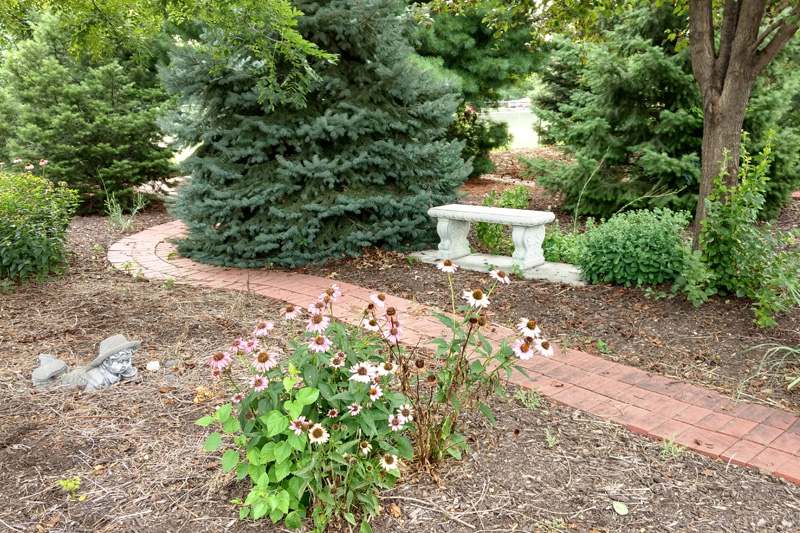the Memorial
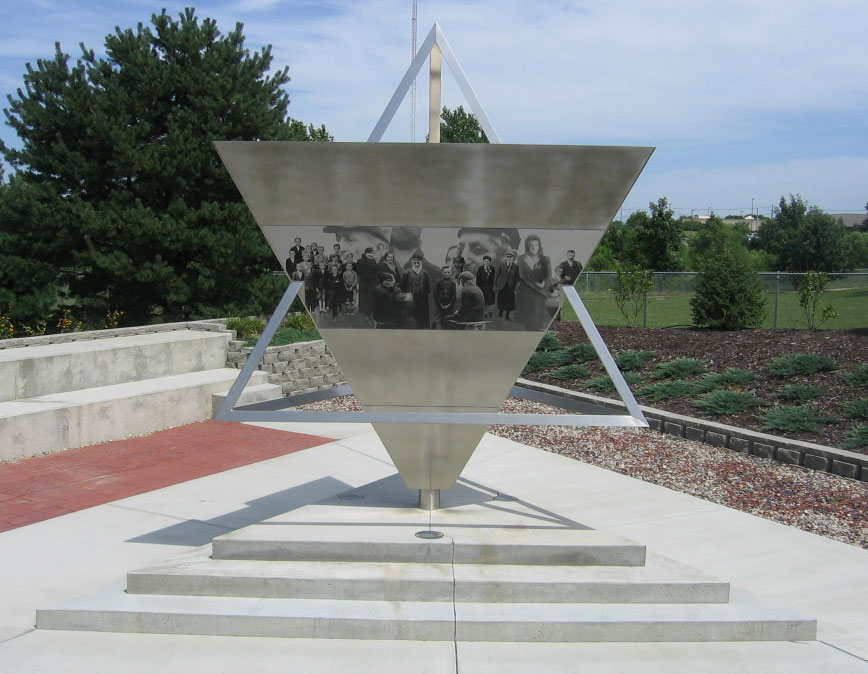
The Star of Remembrance
Competition to design a suitable monument was conducted among a group of eleven architects and artists. Internationally recognized Toronto, Canada artist, Morton Katz, was ultimately selected.
The captivating "Star of Remembrance" sculpture stands sixteen feet high and is comprised of two triangle frames that form a three dimensional star. Depicted are the three stages of the Nazi war against humanity: isolation, deportation, and extermination. Images are of ordinary men, women, children, and concentration camps.
Artists Katz in explaining his work said, "To find an appropriate means of expressing the consequences of the Holocaust, I searched more than 2,000 images, many of unimaginable depravity. Rather than use those graphic images, I felt that the depiction of the victims should be of their time and in their fullness of life." Some of the pictures are of relatives of Nebraska survivors who were murdered in the Holocaust.
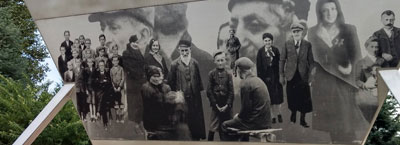
Side 1 of the star depicts all manner of people, young and old, rich and poor, from cities and villages accross Europe before the onslaught.
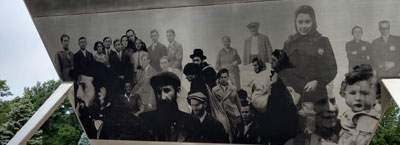
Side 2 of the star converys the rise of Nazism and the spread of the nightmare, when ordinary citizens are forcibly torn from their realities. These citizens are represented by the fading of some images alluding to the impending Holocaust.
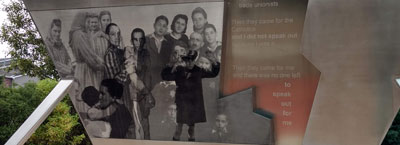
Side 3 of the star represents the aftermath of Nazism, and the loss of more than 11 million people, obliterated by state-sanctioned systematic murder. The fading of all the images protrays their disappearance from existence.
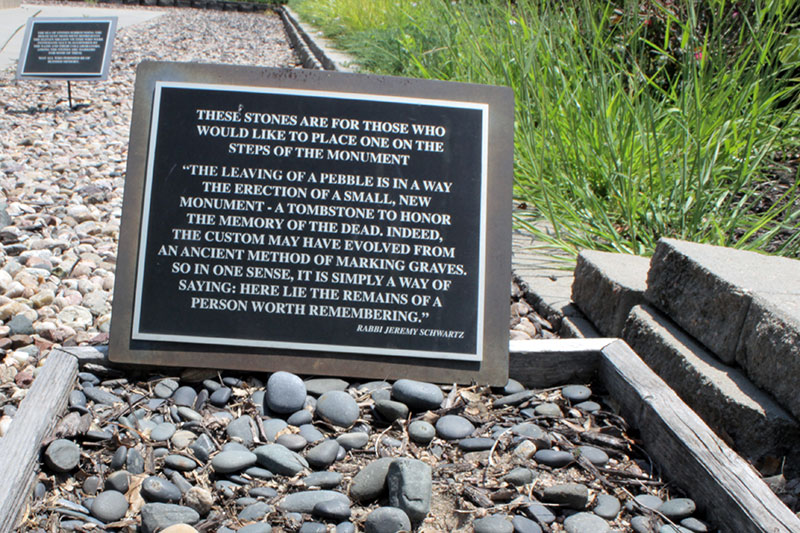
As you enter the Memorial you will note a box with stones. Those of you who would like can take one to place on the Memorial or at the base of the Wall of Remembrance as a way to remember those who were murdered but not forgotten.
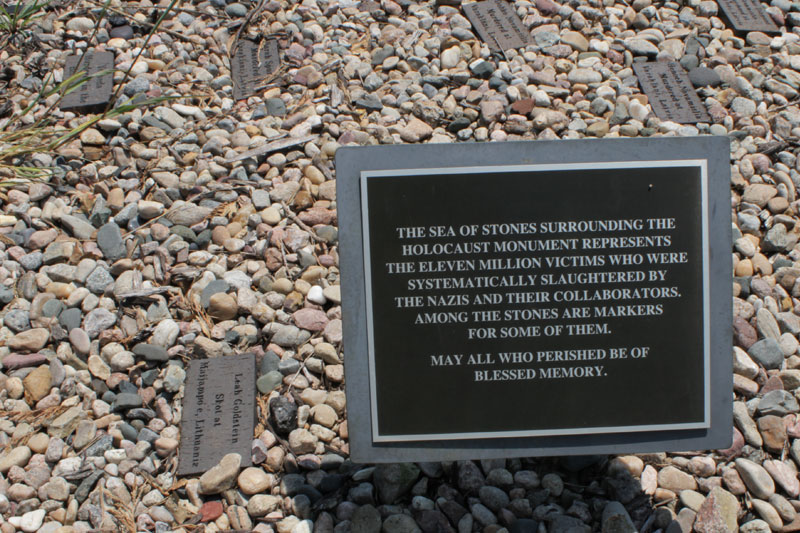
The "Sea of Stones" surrounding the Memorial contains roughly 11 million stones to represent the 11 million individuals murdered by the Nazis. Among the stones are markers with the names of individuals murdered in the Holocaust who have relatives in Nebraska.
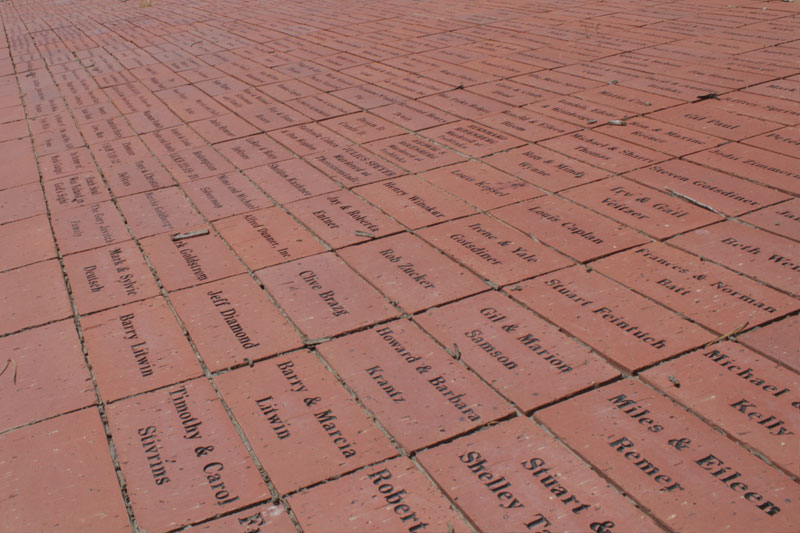
In front of the bleachers are bricks with the names of individuals who have donated at least $100 to help support the educational component of the Nebraska State Holocaust Memorial.
